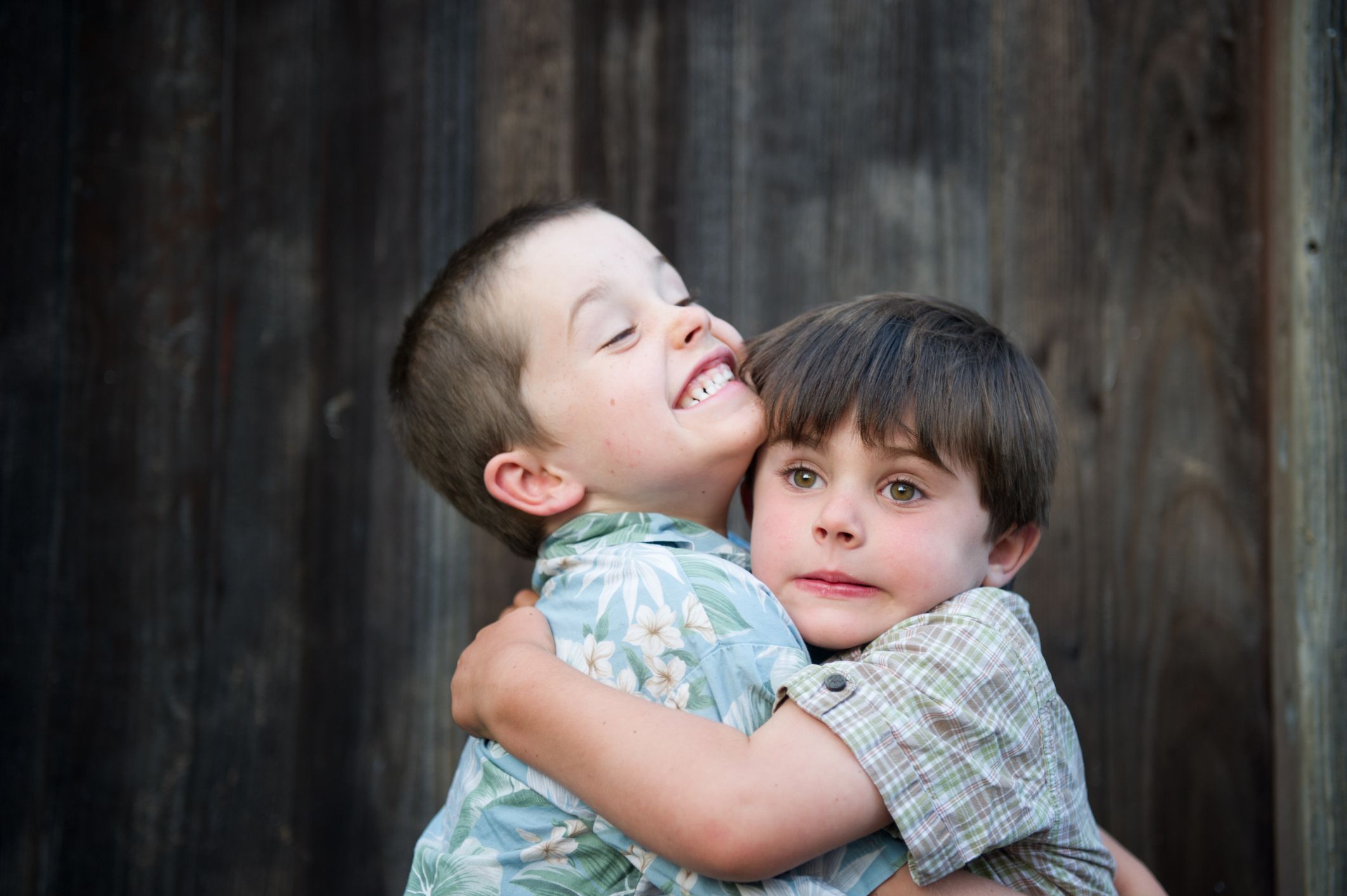Temperament is one of the most underestimated influences in a child’s life. Many times, a difficult temperament trait in a child can be the primary driving force of misbehavior in children. Much of the challenges in child-raising often lead back to temperament qualities, such as low adaption or high emotional intensity. It's critical as a parent to know your child's temperament, especially when disciplining or redirecting children's behavior.
Estimated reading time: 5 minutes

Heartmanity is proud to partner with outstanding companies and products that we wholeheartedly recommend, so this post may contain affiliate links. As an Amazon Associate, I earn from qualifying purchases at no extra cost to you. You can read our full disclosure here.
Temperament is a lot like looking into a kaleidoscope. Children's temperament traits come in a multitude of colors and designs along with countless hues and intensities. Turn the dial of a kaleidoscope slightly and everything dramatically changes. So it is with temperament.
Depending on the child and the circumstances, qualities can be bright and energetic or sober and quiet. Some delight us; some shock us; some make us laugh while others cause us to throw up our hands in exasperation.
Why Bother to Understand Your Child's Temperament?
When we understand temperament as parents, we gain significant insight into our children. The more we know about a child’s temperament, the more easily we can help to regulate them, teach them helpful skills, and respond with love and calmness.
Understanding children’s inborn temperaments makes our jobs easier as parents. Temperament informs us of vital information to prevent problems before they happen. This awareness also helps us to reframe behavior and view children differently. For example, instead of looking at a child as a “troublemaker,” you can learn to appreciate their qualities of high activity and elevated curiosity.
Behind every trait and behavior is a potential strength.
Another important reason why this knowledge is vital to parents has to do with how a child perceives their self. The child's unique temperament and whether he or she views the specific qualities as something positive or negative largely depends on the adults in their life and how they approach the child's behavior.
One of our key jobs as parents is to help our children respond to their temperaments in useful ways that encourage healthy self-esteem. Therefore, when we give children effective strategies to handle their unique dispositions, each trait can serve them in positive ways rather than work against them.
Understanding in-born temperament is vital for your child's success as well as your parenting success!
Common Challenges Originating with Temperament
- low adaption in a child's temperament can instigate power struggles
- lack of focus can be caused by high distractibility or high sensitivity to the environment
- low persistence with a low tolerance for frustration can provoke a challenging academic career unless the child learns how to self-calm and self-motivate
- "children who are negative, impulsive, and unregulated tend to have poor peer relations" (Thomas/Chess)
- children with high energy or impulsiveness fueled by emotional intensity and elevated curiosity can increase unnecessary injuries and accidents
- "behaviorally inhibited children are more likely to experience anxiety, depression and phobias" (Thomas/Chess) and have a predisposition to anxiety, ADD, or ADHD
- children with the traits of low activity, cautiousness, and low curiosity combined with low adaption can result in inordinate shyness
Each trait comes with its own set of challenges. Depending on the varying intensity, how the different traits interact along with how dramatically each one asserts itself determines the difficulty of the child’s overall temperament. The good news is that a knowledgeable game plan goes a long way in empowering your child.
A great parenting book for spirited, high-energy children is "Raising Your Spirited Child" by Dr.Mary Sheedy Kurcinka. Understanding to keep up with these children is imperative as a parent.
The Ten Unique Temperament Traits
1) Sensitivity
2) Activity level
3) Rhythm: regular or irregular
4) Emotional Intensity
5) Approach and withdrawal – a child’s first response to new situations
6) Adaptability
7) Persistence and frustration tolerance
8) Mood
9) Distractibility
10) Perceptivity
Let's learn about each trait separately to help you identify and navigate your child's temperament more effectively.
Trait #1: Sensitivity
Sensitivity is determined by how much information is noticed when it comes into the brain from the eyes, ears, nose, mouth, and skin. How aware is your child of slight noises, emotions, and differences in temperature, taste, and texture? Does he or she react easily to certain foods, tags in clothing, irritating noises, or your level of stress?
A highly sensitive child may sound like this:
“The cereal’s too lumpy.” “The water’s too wet.” “The sun’s too bright.” “My shoes are too tight.” “My sweater is too itchy.” “Suzy chews too loud.”
There is always stimulus bombarding a sensitive child. These kids are not trying to make life difficult. They are simply trying to cope. They really are not lying when they say that they can smell the difference between the Kleenex brands you buy. They are not exaggerating—the applesauce texture really isn’t as smooth. Just remember: Though it can be a nuisance at times, sensitivity is a tremendous gift and creates magnificent artists, cooks, and musicians.
Deep dive with tips: "HeartPrints: Understand Your Child's Temperament."
Trait #2: Activity Level
Is your child always on the move and busy or quiet and slow-moving? Or somewhere in between? Does he or she need to run, jump and use their whole body in order to feel good? Or can he or she sit and play quietly for an extended time? Children with a high energy level don't just feel like moving, they NEED to move!
Ultimately we want the children to catch their growing intensity themselves, to rely on their inner control rather than our control. By giving them the words, we can expect that by the time they are three and a half or four years of age, we will be hearing things like: “Mom, I’m starting to bounce off the walls, help me.” Or, “Dad, I’m really revved up.” Or, “I’m having a very hard morning."
―Mary Sheedy Kurcinka
(excerpt from Raising Your Spirited Child)
Trait #3: Rhythm: Regularity versus Irregularity
The rhythm can largely be determined by a child’s bodily functions such as sleeping, eating, and elimination. Is he or she hungry and tired at the same time each day? Are the child’s habits predictable or unpredictable? A child can fall anywhere between being highly regular to mildly irregular to dramatically irregular. Any extreme can present problematic behaviors.
Trait #4: Emotional Intensity
How strong are the child’s emotional reactions? Does he or she laugh and cry loudly and energetically or softly and mildly? High emotional fervor is generally great in drama while more mild emotional intensity can have a difficult time jump-starting themselves and lack motivation.
When I was a little boy, they called me a liar, but now that I am grown up, they call me a writer. —Isaac Bashevis Singer
 Trait #5: Approach/Withdrawal: First Reaction
Trait #5: Approach/Withdrawal: First Reaction
Is the child’s first reaction to new or unfamiliar people or activities to jump right in with enthusiasm or hang back and check it out? Do environments affect how they respond or does your child consistently withdraw? Very different skills are needed for each temperamental reaction. For instance, the child who is overly cautious needs to be encouraged to stretch and learn new things while the child who plunges thoughtlessly into new situations requires learning how to assess and think things through before acting.
Trait #6: Adaptability
How quickly and easily does the child adapt to new situations and to hour-by-hour change from one activity to another? A child who has low flexibility is like a taut rubber band. At any moment, an unexpected event or change in plans can make him or her snap! It can be a temper tantrum or a meltdown into tears or throwing things across the room. A child with high adaptability is flexible, has lots of ability to handle changes, and flows with the punches. He is easy-going and can handle many changes and challenges.
Trait #7: Persistence/Frustration Tolerance
How long can the child pay attention to one activity or stick to something she is having difficulty with? Children with low persistence tend to ask for help quickly or give up easily and move on to another activity. Highly persistent children are goal-oriented, wrestle calmly with challenges, and keep trying even when an activity is beyond their skill level. These same children often create power struggles by insisting on having things their way. Therefore, it is crucial to set clear and firm limits for these children while children who give up easily need encouragement.
Trait #8: Mood
Is he or she usually sunny and cheerful? Positive or serious and analytical? Does your child find the positives of situations or collect all the ways that an experience is negative and displeasing, reviewing the details repeatedly? Parents of children who are very serious and analytical can at times feel like nothing is ever good enough. However, these analytical children hold enormous gifts and will make excellent architects, builders, programmers, and are generally great in the sciences.
Trait #9: Distractibility
How easily do activities pull the child away from his or her task? Can the child concentrate on one activity for a reasonable time or do people and things in the environment distract the child? A child with high distractibility has difficulty focusing even briefly and needs to learn and practice slowing down and paying attention.
Trait #10: Perceptivity
Perceptivity is an acute awareness of the environment. Does the child notice and remember details most people miss? Is the child highly fascinated by shapes, sounds, colors, hues, and movement? A perceptive child is very observant and keenly aware of everything around them, including the relationship between things, people, and experiences.
Related reading: Visionary Is the Key to Capable and Happy Children
 Each child comes with their own unique personality and temperament. Accept this precious gift. Look at your child’s temperament like one who gazes into a kaleidoscope with fascination and an appreciation for complexity and beauty.
Each child comes with their own unique personality and temperament. Accept this precious gift. Look at your child’s temperament like one who gazes into a kaleidoscope with fascination and an appreciation for complexity and beauty.
And remember, with a shift of attention just like the turn of the dial of a kaleidoscope, you have the power to convert aggravations to understanding and annoyances into your child’s finest qualities. Take time to celebrate the wonder and joy of your child every day and her unique and ever-changing kaleidoscope!
Don't miss Heartmanity's great parenting advice and tips through our HeartPrints and HeartMail newsletters. For personalized support regarding your child's temperament, contact Jennifer.
CREDIT: The information in this blog is an excerpt from a temperament workshop from the International Network for Children and Families (INCAF) founded by Kathryn Kvols. Jennifer Williams is a certified Instructor and Instructor Trainer for INCAF and of the popular course Redirecting Children's Behavior. She is also the author of the parenting workshop on temperament as well as the article above. One of Jennifer's passions is temperament and she has studied it for decades. Heartmanity has done countless Family Home Visits assisting parents to better understand their children's unique temperament because we believe it is a vital key to every family.









